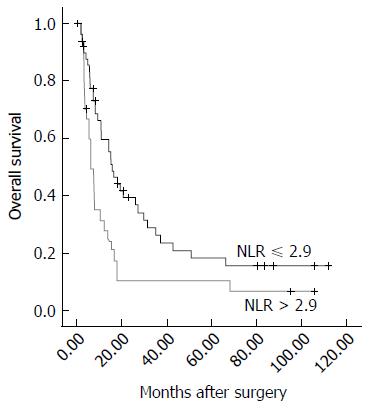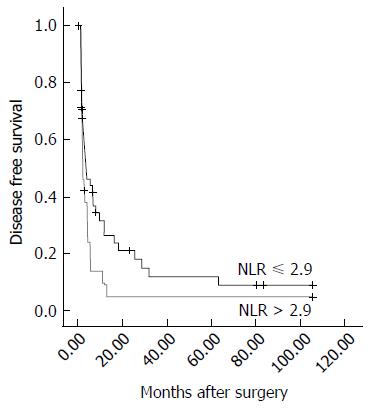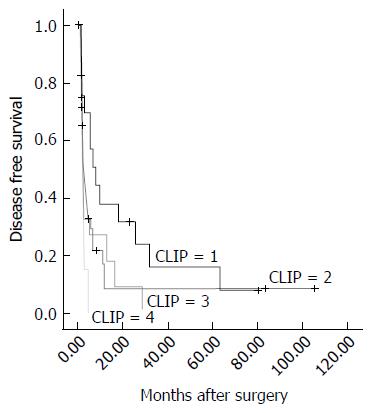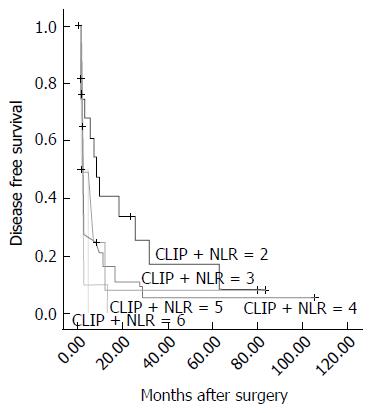Copyright
©The Author(s) 2017.
World J Gastroenterol. May 7, 2017; 23(17): 3122-3132
Published online May 7, 2017. doi: 10.3748/wjg.v23.i17.3122
Published online May 7, 2017. doi: 10.3748/wjg.v23.i17.3122
Figure 1 Overall survival of patients in the two groups.
The median overall survival duration in the high neutrophil-to-lymphocyte ratio (NLR) group was significantly shorter tháan that in the low NLR group (6.2 mo vs 15.7 mo, respectively, P = 0.007).
Figure 2 Disease-free survival of patients in the two groups.
The median disease-free survival duration in the high neutrophil-to-lymphocyte ratio (NLR) group was significantly shorter than that in the low NLR group (2.2 mo vs 3.7 mo, respectively, P = 0.039).
Figure 3 Disease-free survival of patients in the four groups according to the Cancer of the Liver Italian Program score.
The median disease-free survival duration in each group was 7.9, 2.3, 1.5, and 2.3 mo, respectively (from 1 to 4, P = 0.039). CLIP: Cancer of the Liver Italian Program.
Figure 4 Disease-free survival of patients in the four groups according to the combined neutrophil-to-lymphocyte ratio with Cancer of the Liver Italian Program score.
The median disease-free survival duration in each group was 7.9, 2.3, 2.7, 1.6, and 1.1 mo, respectively (from 2 to 6, P = 0.023). CLIP: Cancer of the Liver Italian Program; NLR: Neutrophil-to-lymphocyte ratio.
- Citation: Li SH, Wang QX, Yang ZY, Jiang W, Li C, Sun P, Wei W, Shi M, Guo RP. Prognostic value of the neutrophil-to-lymphocyte ratio for hepatocellular carcinoma patients with portal/hepatic vein tumor thrombosis. World J Gastroenterol 2017; 23(17): 3122-3132
- URL: https://www.wjgnet.com/1007-9327/full/v23/i17/3122.htm
- DOI: https://dx.doi.org/10.3748/wjg.v23.i17.3122
















